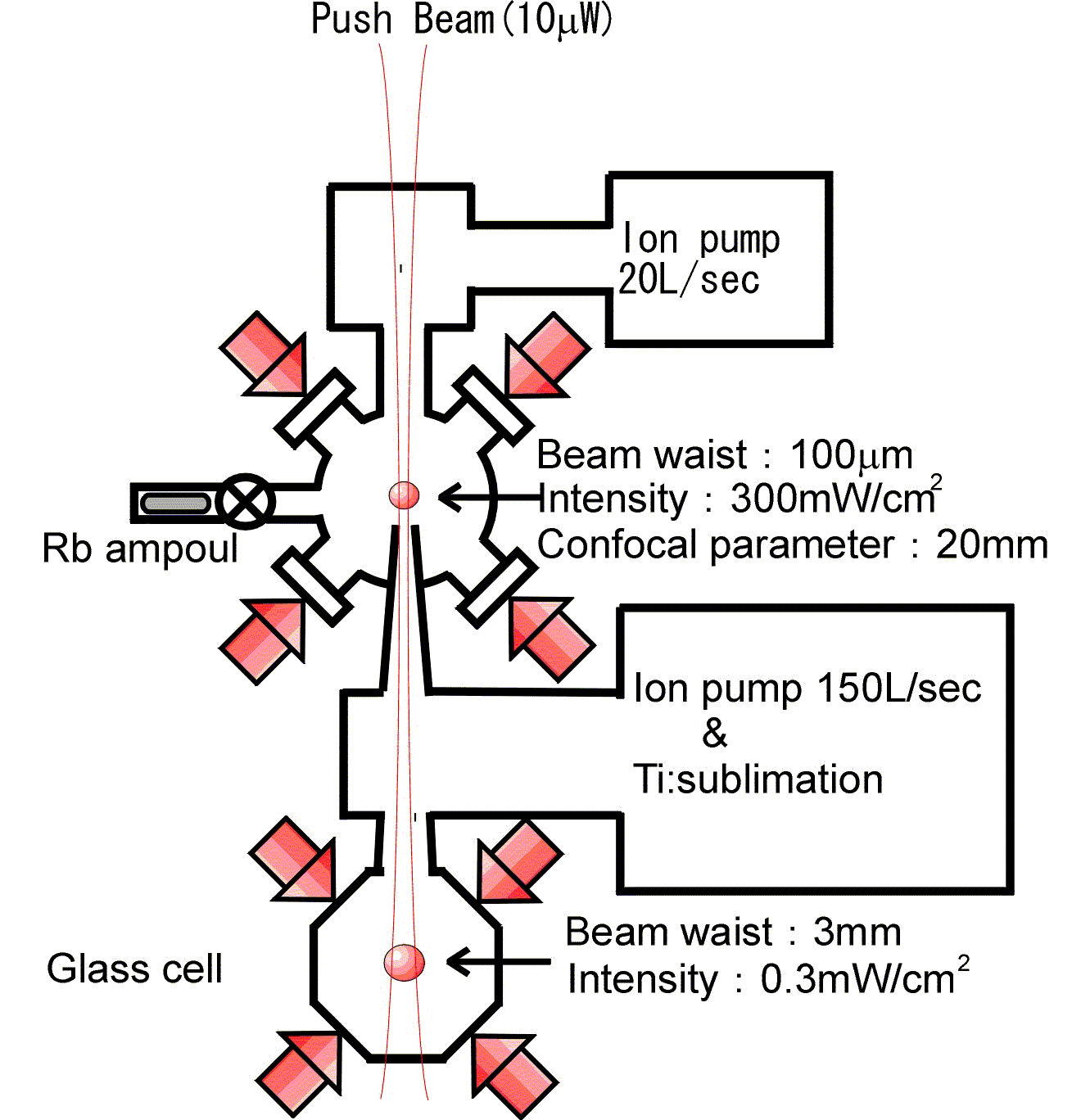
You can download the pdf version of this page
Improved double Magneto-Optical Trap
Department of Physics, Gakushuin University,
and Core Research for Evolutional Science and Technology(CREST), JST
K.Ito, R.Namiki, K.Kondo, T.Sakano, Y.Sasaki, S.Nakamura, Y.Torii, T.Hirano
At the first stage to create a Bose-Einstein condensate (BEC) of rubidium atoms, a double magneto-optical trap (MOT) has been widely used for collecting a large number of atoms (~109) in ultrahigh vacuum(~10-11 torr). In a standard double MOT, the atoms are first captured in the first MOT from a background gas and multiply transferred to the second MOT in ultrahigh vacuum using resonant laser pulses (sometime with a guiding magnetic field). So far, a typical loading time of the second MOT is few tens of seconds, which is limited by a relatively low flux of atoms (< 108 atoms/s). We have demonstrated continuous loading of atoms using a cw resonant pushing beam with no guiding magnetic field. We obtained a flux of 3.7
x108 atoms/s, allowing us to collect 109 atoms in the second MOT in only 3 s.The experimental setup of our double MOT system is illustrated in Fig1. The vacuum system consists of two parts, an upper chamber (with six ICF70 viewports) and a lower octagon glass cell. The vacuum pressure of the upper chamber (filled with rubidium gas) is about 10-8 torr and that of the lower cell is about 10-11 torr (inferred from a trap lifetime of 600 s limited by background gas collisions). A taper-shaped tube connects upper and lower parts, allowing good differential pumping (the tube has a length of 60 mm and an inner diameter of 4 mm (10 mm) at the top (bottom) of the tube). The atoms captured in the upper MOT are continuously pushed to the lower MOT located 26 cm below as follows. We focus a cw weak (10
mW) resonant push beam to the center of the upper MOT and extract a cw atomic beam. At the focus point, the push beam has a waist of 100 mm and an intensity of 300 mW/cm2, which is much larger than the saturation intensity (1.6mW/cm2). On the other hand, at the position of the lower MOT, the push beam has a waist of 3 mm and an intensity is 0.3 mW/cm2, which is well below the trapping laser intensity of the lower MOT (2 mW/cm2 per each beam), therefore the lower MOT is hardly affected by the push beam.Fig.2 shows a loading profile of the second MOT obtained by detecting the fluorescence of trapped atoms with a calibrated photo diode. The initial loading rate is 3.7
x108 atoms/s. After 20 s loading, the number of atoms levels off at 4.5x109, which is presumably limited by intra-trap binary collisions.We believe this simple and fast loading technique facilitates experiments to create rubidium BECs, and hopefully leads to realization of cw atom lasers.

Fig 1 double MOT system with a cw push beam

Fig 2 Loading profile of the 2nd MOT